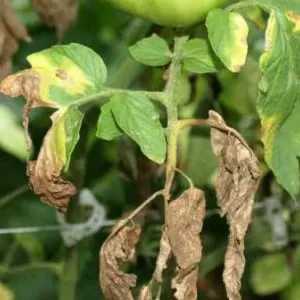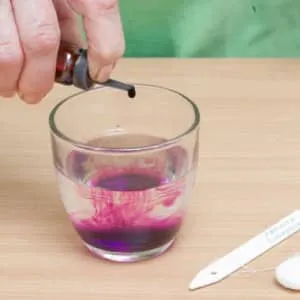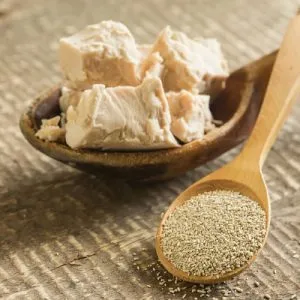If you notice signs of late blight on your tomatoes, don’t rush to use chemical treatments. We’ll show you what to do if late blight appears on tomatoes and how to combat it using organic methods in a greenhouse.
In this article, you’ll find accessible and effective organic spray recipes against late blight, tested by gardeners through personal experience.
Table of contents
Symptoms and Causes of Late Blight on Tomatoes

Late blight typically appears on tomatoes in the second half of summer, causing a disease known as late blight (Phytophthora infestans). This fungal disease affects solanaceous crops.
Leaves, stems, and eventually fruits develop brown spots. Flower clusters fail to develop, dry out, and soon the entire crop is lost.
The fungal spores live in soil, plant debris, and gardening tools, infecting plants year after year.
Common causes of late blight include prolonged monoculture planting, proximity to other solanaceous plants, excessive humidity, damp weather, frequent fog, heavy dew, and overcrowded tomato plants.
Organic Methods to Combat Late Blight in Greenhouses
To grow organic produce, experienced gardeners use traditional remedies against late blight on tomatoes.
Hydrogen Peroxide
Gardeners value this solution for its properties:
- Enriches plants with oxygen
- Has disinfecting qualities
- Improves seed germination
- Enhances root aeration
- Acts as a natural sanitizer
The hydrogen and oxygen molecules in peroxide create an oxidation process when applied to soil, effectively killing late blight spores.
Application methods:
- Soil treatment: Apply in spring 5 days before planting. Pour 2 liters of solution per planting hole (6L water + 100mg peroxide).
- Seed disinfection: Soak seeds in 3% peroxide solution for 20 minutes before planting.
- For growth stimulation: Weekly foliar spray (2L water + 4 tbsp peroxide) after transplanting.
- For mature plants: Apply as foliar spray or root drench (2L water + 2 tbsp peroxide) to damaged areas.
Important. Always dilute hydrogen peroxide in lukewarm water. Treat tomatoes weekly.
Salt Solution
Common table salt works as a preventive measure against late blight. The saline solution creates a protective film on plants that inhibits fungal growth.
At first signs of infection, remove affected leaves and fruits. Then spray plants with salt solution (10L water + 1 cup salt).
Copper Wire Technique
A traditional method used by gardeners for generations: piercing tomato stems with copper wire. Use sterilized copper wire cut into 3cm pieces.
Insert horizontally through the stem base about 10cm above soil level. Leave wire ends loose. This provides copper ions that boost plant resistance.
Note. Perform stem piercing only when stems become sturdy.
Garlic and Potassium Permanganate Spray
 Garlic and potassium permanganate serve as effective antiseptics against tomato fungal diseases while also acting as natural fertilizers that stimulate beneficial soil compounds.
Garlic and potassium permanganate serve as effective antiseptics against tomato fungal diseases while also acting as natural fertilizers that stimulate beneficial soil compounds.
Solution benefits:
- Powerful disinfectant action
- Heals fruit cracks
- Oxygenates soil
- Destroys fungal spores
Begin applications before first fruit set, repeating every two weeks.
Preparation: Soak 1 cup crushed garlic in 10L water for 24 hours, then add 2g potassium permanganate.
Yeast Treatment
Yeast solutions work excellently for both prevention and treatment of late blight. Yeast bacteria suppress pathogenic fungi while providing valuable nutrients.
 Dry yeast preparation:
Dry yeast preparation:
- Dissolve 1 packet dry yeast in 1L warm water (≤36°C)
- Add 0.5L fruit preserves or ½ cup sugar
- Mix well and ferment for 6 hours in warm place
- Dilute with water to make 10L total
- Apply 1L per plant at root zone
Apply as foliar or root feed every 2 weeks (3 applications per season).
Important! Always use yeast solutions fresh.
Fresh yeast alternative:
- 1L whey
- 100g fresh yeast
- 15 drops iodine
- 9L water
Note. Add iodine just before application.
Proper Greenhouse Spraying Techniques
Effective late blight control requires proper application methods.
Always apply treatments after watering, during evening hours.
Essential guidelines:
- Ventilate greenhouse before 8 AM daily
- Remove and destroy infected plant material
- Spray entire plants including stems and pedicels
- Maintain precise solution concentrations
Preventive Measures
Begin late blight prevention immediately after transplanting.
Prevention strategies:
- Spray with 1% potassium permanganate solution twice per season
- Remove old leaves and fallen fruit
- Maintain consistent soil moisture
- Control greenhouse humidity
- Keep air temperature at 22-24°C
- Ensure adequate lighting
- Apply peat-based fertilizers
- Water at base only
- Replace topsoil annually
- Use disease-free seeds
Gardeners' Experiences
Here's what European growers say about late blight control.
Thomas: "My family has always used organic methods for late blight prevention. I continue their traditions with salt sprays, garlic-potassium permanganate solutions, and especially hydrogen peroxide treatments. The tomatoes grow vigorously with vibrant foliage and excellent fruit set."
Sophie: "I combat greenhouse late blight exclusively with organic approaches. Each season begins with soil treatment using 1% potassium permanganate solution. After transplanting, I switch to hydrogen peroxide sprays (2 tbsp per liter) every two weeks. For extra protection, I occasionally use iodine-potassium permanganate mixtures, thoroughly coating each plant."
Luca: "When I started growing tomatoes commercially, a neighboring farmer taught me about yeast treatments. The results were phenomenal - the plants flourished. Now I combine this with spring/autumn soil treatment using mild potassium permanganate solution and root applications of hydrogen peroxide (1 tbsp per liter, 500ml per plant)."
Conclusion
Late blight in greenhouse tomatoes can be effectively managed using biological methods. These solutions are readily available in any European household or local pharmacy. When used correctly, organic treatments provide safe protection without health risks or environmental harm, ensuring healthy produce for your family.







